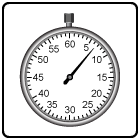


3 scores max per player; No foul language, show respect for other players, etc.
Name | Score | Date | ||
|---|---|---|---|---|
| 1 | ||||
| 2 | ||||
| 3 | ||||
| 4 | ||||
| 5 | ||||
| 6 | ||||
| 7 | ||||
| 8 | ||||
| 9 | ||||
| 10 |
This is a timed game. Your final score is equal to the total score minus time taken.
Game: CHOOSE OR LOSE
Aim: Choose the right answer; beat the clock
Method:
You start the game with 50 points. Each question has 2 to 4 answers. Select the correct answer before your time runs out to score points. Right answers are +10, wrong answers are -2, out of time is -5.
This is a timed game. Your final score is equal to the total score minus time taken.

anonymous 😂😍😂
"Count down in steps of 5 to -100"
CHOOSE OR LOSE game to practice
'Doubling each time' for 3rd grade
Number patterns: double the number each time
This topic focuses on a number pattern where the next number is worked out by doubling the current one (multiply it by 2). This doubling pattern is easiest to understand by looking at examples. Let's start by looking at the simplest example:
1 , 2 , 4 , 8 , _ , _ ...
What comes next? To find out, let's first make sure this pattern is a doubling pattern by looking at the differences between each pair of numbers. You may notice that we are using multiply and divide because this pattern is a geometric sequence, not an arithmetic sequence.
- 2 ÷ 1 = 2
- 4 ÷ 2 = 2
- 8 ÷ 4 = 2
You can see that in each step, we multiply the previous number by 2 to get the next number in the sequence. That is because doubling a number is the same as multiplying it by 2. Now, let's use this rule to find the next number:
8 x 2 = 16
The next number in the pattern is 16. The sequence now looks like this:
1 , 2 , 4 , 8 , 16 , _ ...
If we do the next number in the sequence, it will be 16 x 2 which is 32,
1 , 2 , 4 , 8 , 16 , 32 ...
To recap, always remember the following steps when identifying the next number in a pattern that doubles the size of the number each time:
- Confirm that the ratio between each pair of consecutive numbers is 2 by dividing them.
- Multiply the last number in the sequence by this ratio of 2.
- That gives you the next number in the sequence.
This topic asks you to work out the missing number in the pattern of numbers created by doubling the current number each time.
Related topics
With our Choose or lose math game you will be practicing the topic "Doubling each time" from 3rd grade / Pattern / Number patterns. The math in this game consists of 16 questions that ask you to pick the next number in these number doubling patterns.

Our CHOOSE OR LOSE game is a simple activity to help elementary math learners and will improve the speed at which you can solve problems in the given topic. It does not rely on the learner typing in the answer. Rather, the learner must choose the correct answer from a list of 2, 3 or 4 similar answers.
CHOOSE OR LOSE encourages faster problem-solving for common and vital elementary math topics. CHOOSE OR LOSE is a timed game with a leaderboard for each topic at each of the 4 levels on offer. You can play the game with or without audio and robots.
UXO * Duck shoot * The frog flies * Pong * Cat and mouse * The beetle and the bee
Rock fall * Four in a row * Sow grow * Choose or lose * Mix and match

Latest leaderboard entries: Choose or lose




How to play Choose or lose to practice
'Doubling each time' for 3rd grade

Our CHOOSE OR LOSE game asks the learner to click on the correct answer from a selection of possible answers before the clock runs down.
- Click on PLAY to start.
- You are presented with a topic question, then a list or grid of 2 to 4 possible answers (depending on the topic you have chosen).
- You must select the correct answer by clicking on it before the clock counts down.
- You have 10 seconds in total to answer each question.
- The clock starts ticking down 5 seconds after the answers have appeared.
- To hear the question again, click / tap on the question box.
- The browser will speak the potential answers on rolling-over them.
- A correct answer gains you 10 points.
- A wrong answer loses you 2 points.
- A time-out loses you 5 points.
- A score is kept of correct answers against number of answers.
- The game is timed, and your final score (points earned minus time taken) is given at the end of the game. Top 10 scores for a topic get you a place on the leaderboard.










